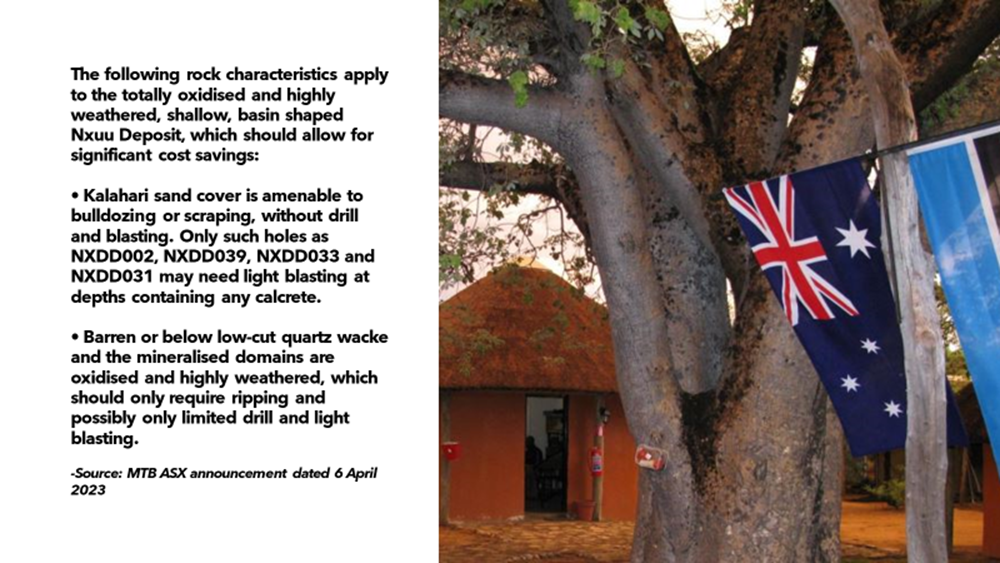Highlights
- At the Nxuu Deposit, average of 28 metre per drill hole (65% of each hole) has mineralisation above low-cut grades
- The company says test work shows Vanadium Pentoxide (V2O5) recovery on site through gravity separation
- Vanadium Pentoxide is used in the clean energy space and power storage, with Vanadium redox flow batteries incorporating V2O5
In continuation to its previous announcement dated 12 December 2022, which related to 43 drill holes at the Nxuu Deposit, Australia listed exploration company Mount Burgess (ASX: MTB) has now released a report for a total of 47 drill holes with mineralisation of Zinc (Zn)/Lead (Pb)/Silver (Ag)/Vanadium Pentoxide (V2O5)/Germanium (Ge)/Gallium (Ga).
The company has said that an average of 28 metre per drill hole (65.5% of every hole) holds mineralisation that is above low-cut grades, with 42.74 metres per hole being the average base of mineralization (Zn/Pb/Ag/ V2O5/Ge/Ga).
Low-cut grade for calculation are as follows -- 1% for Zn and Pb, 10g/t for Ag, 300ppm for V2O5, 3g/t for Ge, and 10g/t for Ga.

Image source: Company website
Recoverable metal
Mount Burgess has further stated that the test work done so far demonstrates that 93% Zn is recoverable on site by way of solvent extraction and electro-winning. 82% V2O5 is recoverable on site by using gravity separation, and alongside subjecting tail to flotation (with the help of hydroximate acid). Lead carbonate is recoverable through gravity, followed by flotation, which also would recover silver minerals.
Germanium and Gallium are hosted in micas, the company says, and these are responsive to flotation. Metallurgical test work is pending for determination of onsite recovery.
The ASX-listed shares of Mount Burgess Mining were trading at AU$0.003 at the time of writing on 6 April 2023, which reflected a jump of nearly 20% as compared to MTB shares’ last closing price.



